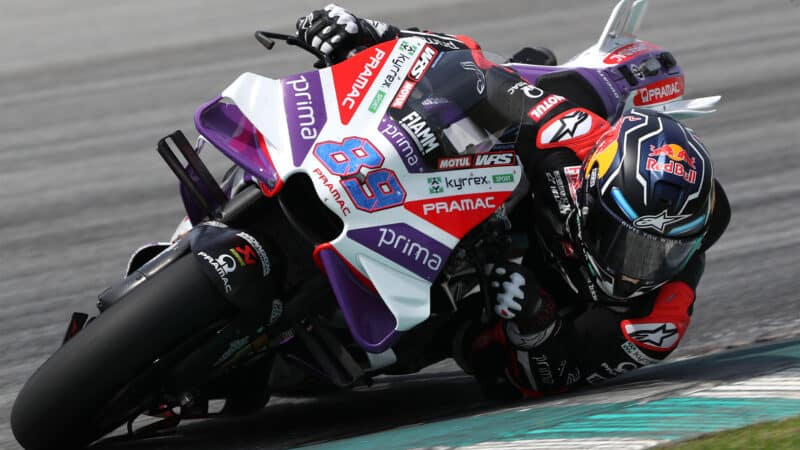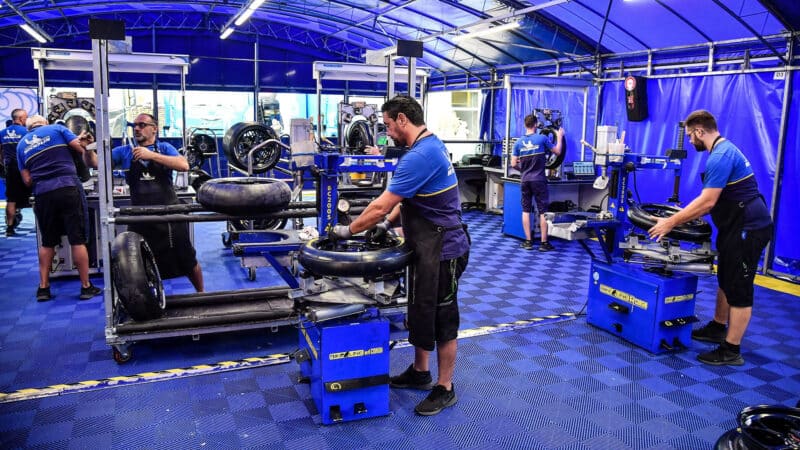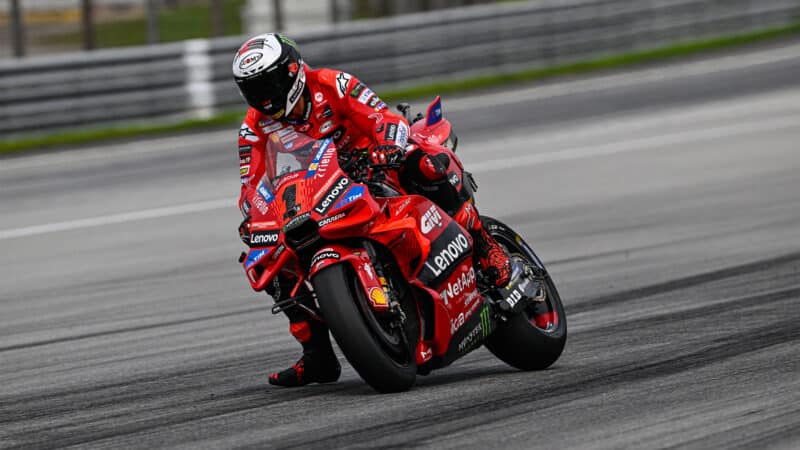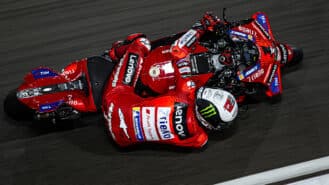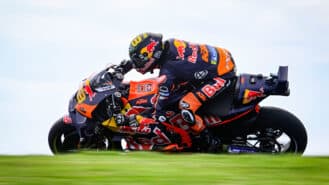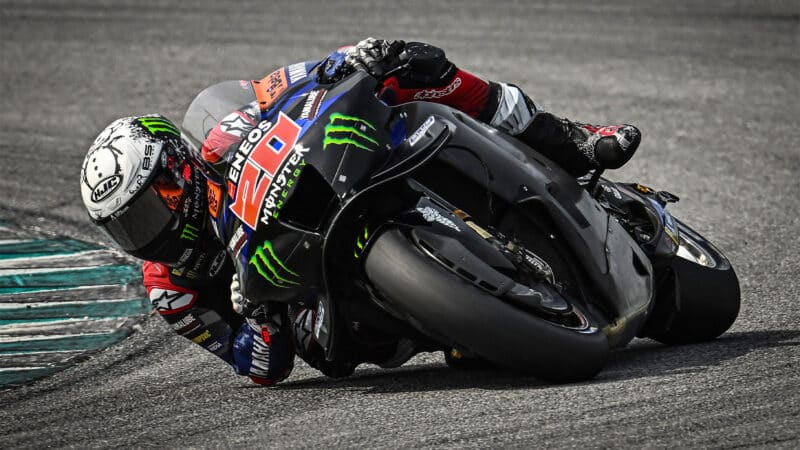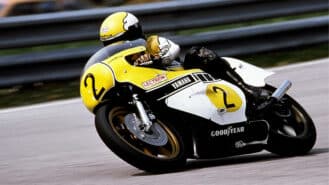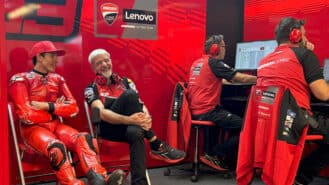That changes the tyre’s rigidity, so the tyre and therefore the whole bike will feel different from the start of the corner to the end of the corner. And the rider must compensate accordingly.
It’s even more extreme when going from right to left or vice-versa, because the difference in temperature between each side of the tyre can vary by as much as 60C, so the tyre, and therefore the bike, will behave differently in lefts and rights.
In other words, the tyres and bike may feel different in every corner, so the rider must log this info, understand what’s happening and adjust his technique to get the best out of the bike at every corner. Not a simple process.
By the way, if a rider gets too much wheelspin exiting a corner the rear tyre can reach 200C. That’s when you see smoke!
In spec-tyre racing the rider cannot ask the tyre manufacturer for a special tyre to band aid his problems. The rider and his crew have one job – to tweak the bike and his riding technique to maximise the performance available from tyres, while Michelin looks on.
“It’s a bit like being invited to a party and watching everyone else have all the fun,” grins Michelin motor sport director Matthieu Bonardel.
This year, however, Michelin’s MotoGP engineers will bring something new to the party. They have all-new compounds for their front and rear slicks, cooked up by their chemists at Clermont-Ferrand.
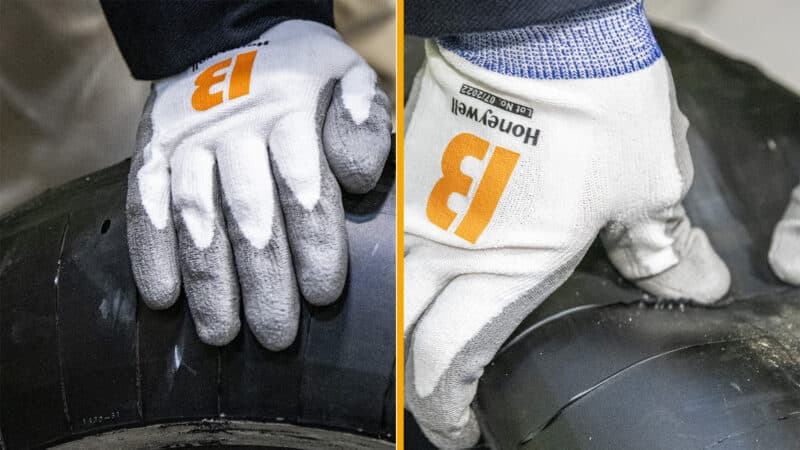
How heat changes tyres: left tyre is cold, like a wooden table. Right tyre has been heated to 90C, like a bendy toy
Will the new compounds upset the status quo? Lap times in pre-season testing suggest not, but testing isn’t racing.
What we do know is that when you change a tyre spec you may change everything. That’s what happened in 2020, when Michelin’s softer-construction rear slick brought the reign of established stars like Valentino Rossi, Andrea Dovizioso and Danilo Petrucci to an end, because they couldn’t adapt their more aggressive styles to the tyre, while MotoGP’s new generation of Joan Mir, Fabio Quartararo and Bagnaia did exactly that.
One of the aims of Michelin’s 2024 chemistry is to create harder, more enduring compounds that also grip better, which may just ease the tyre pressure problems that have caused so much controversy in recent seasons. The new compounds have been used throughout testing – all the riders say the new rubbers improve consistency and half of them say they also improve grip.
“The goal with this new compound technology was different for the front and the rear,” says Michelin MotoGP engineer Romain Cacheux. “The goal for the rear was consistency, the goal for the front was more about being able to make the hard-plus tyre.”
The idea of the hard-plus is that the harder compound will make the tyre less susceptible to building pressure, so riders won’t be caught so badly between a rock and a hard place – between going too high and losing some footprint and going too low and getting disqualified. However, the hard-plus won’t be available until April’s Spanish GP.
“With the previous technology when we wanted to go harder with the compound to support the motorcycle better, we lost a bit of feedback and grip,” adds Cacheux. “That’s why we needed to change the chemistry to access stiffer compounds, without losing any grip or feedback.”

Race front-tyre pressure – averaged across the entire grid – in 2023. The rule became mandatory from Silverstone, so pressures increased to avoid penalties, but Michelin say there were fewer crashes and more new lap records after the British GP
In fact Michelin says it’s done tests that prove the loss of grip when running the front at 2.1 bar instead of 1.9 bar (roughly, the upper and lower limits ) is only 0.05 mu, worth around one hundredth of a second per lap.
“So what the riders complained about isn’t a loss of grip but about the change of tyre feeling,” explains Cacheux.
This may be true to a point, but last year plenty of riders did tell me they had more locking and tucking at higher pressures. They just got used to it and adapted their techniques, because they’re geniuses.
